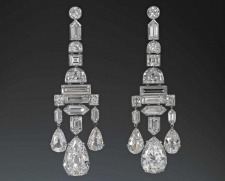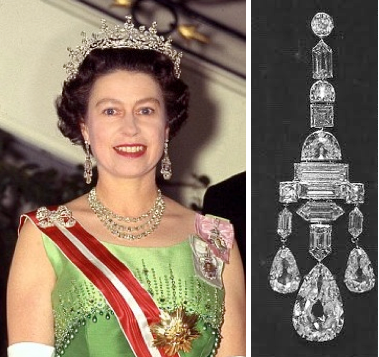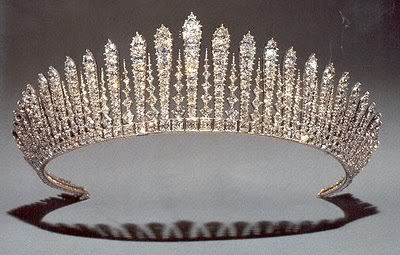A rare sight in the Queen's Personal Jewel Collection- one specially made for her. Most tiaras in her vault have been inherited from the crown, or given as gifts. Many have previously belonged to Queen Mary and The Queen Mother. But the Burmese Ruby Tiara was specially commissioned for The Queen by Garrard in 1973. The tiara was made using jewels in The Queen's possession, including 96 rubies presented 'by the people of Burma.' Most notably (to my dismay), the diamonds on the tiara have been taken from the Nizam of Hyderabad Tiara.
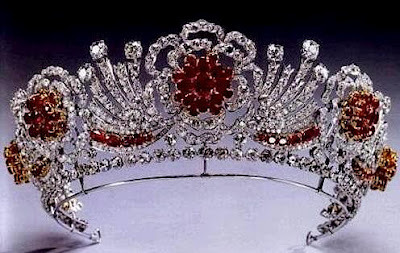
From The Order of Splendour, 'The rubies which give us our name were a symbolic gift: according to traditional Burmese beliefs, rubies are meant to protect their owner from evil and illness, and there are 96 diseases that can affect humans.'
Clusters of rubies shaped as roses are joined by lines of the same gem, with their petals made of diamonds. Bursts of diamonds also fan out from the lines of rubies. The Queen wears the tiara along with three ruby necklaces and other jewels in her possession. Before the tiara, The Queen's collection was devoid of a ruby tiara, and it's good to see her take initiative and order a new one- a rare occurrence for such a frugal monarch.

That sai, I have to say that this tiara is certainly not one of my favourites. From afar it looks nice, but close up the bursts of diamonds look too manufactured to me. But the main reason I don't have a fondness for the piece is that the Nizam of Hyderabad Tiara (one of my favourites), pictured below, was dismantled for this piece. It was such an elegant piece, and looked oh so lovely on the young Queen. But this tiara is pleasant enough, and was certainly needed to add a touch of red to HM's jewel collection.
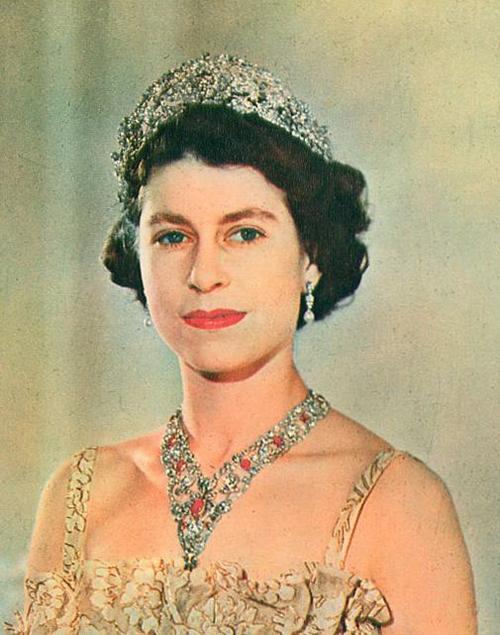
Pictures: Getty Images/bijoussimo/Order of Splendour/master-zoro/Mad Hattery
Do you like this tiara? Or was the Nizam tiara better?
